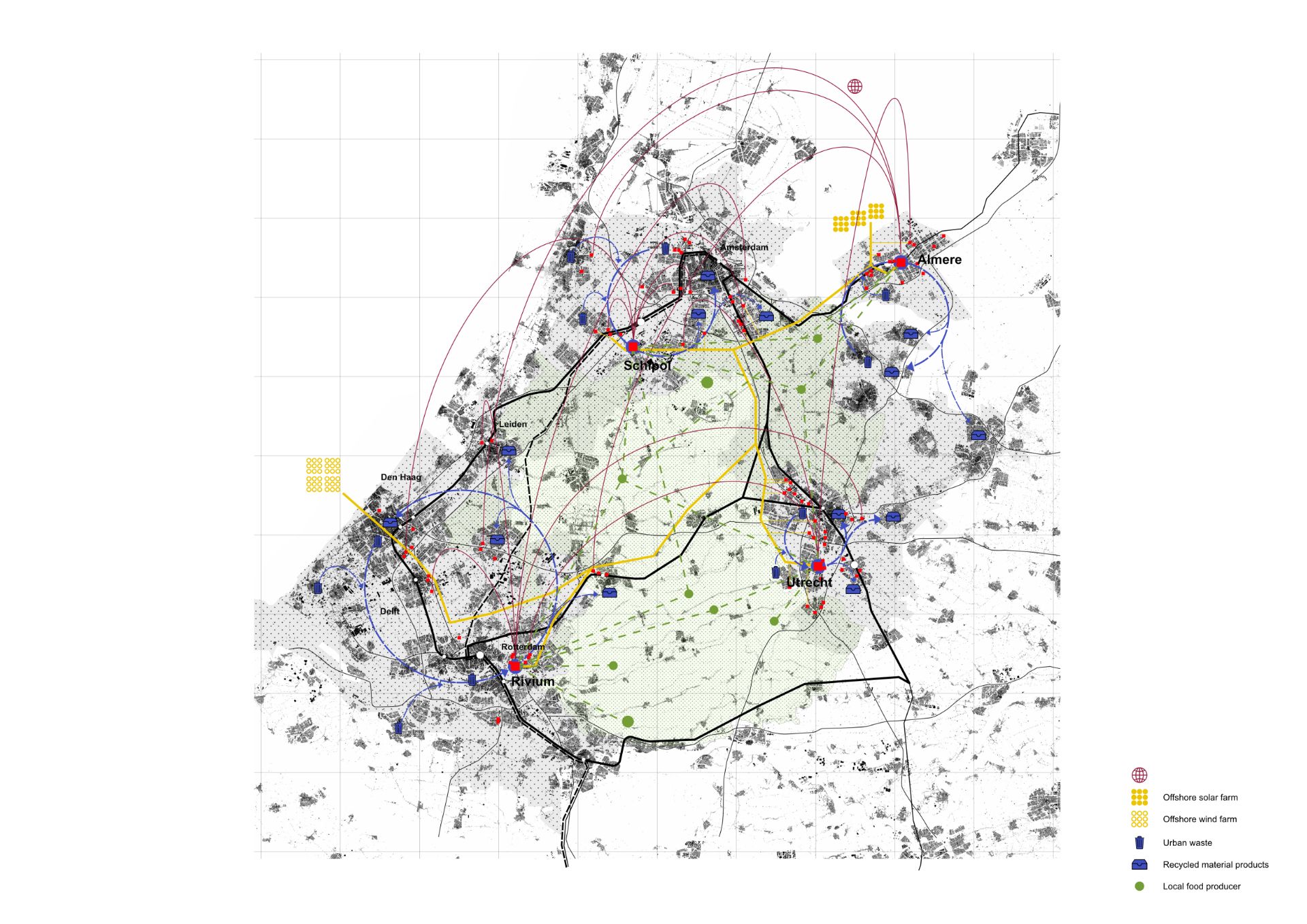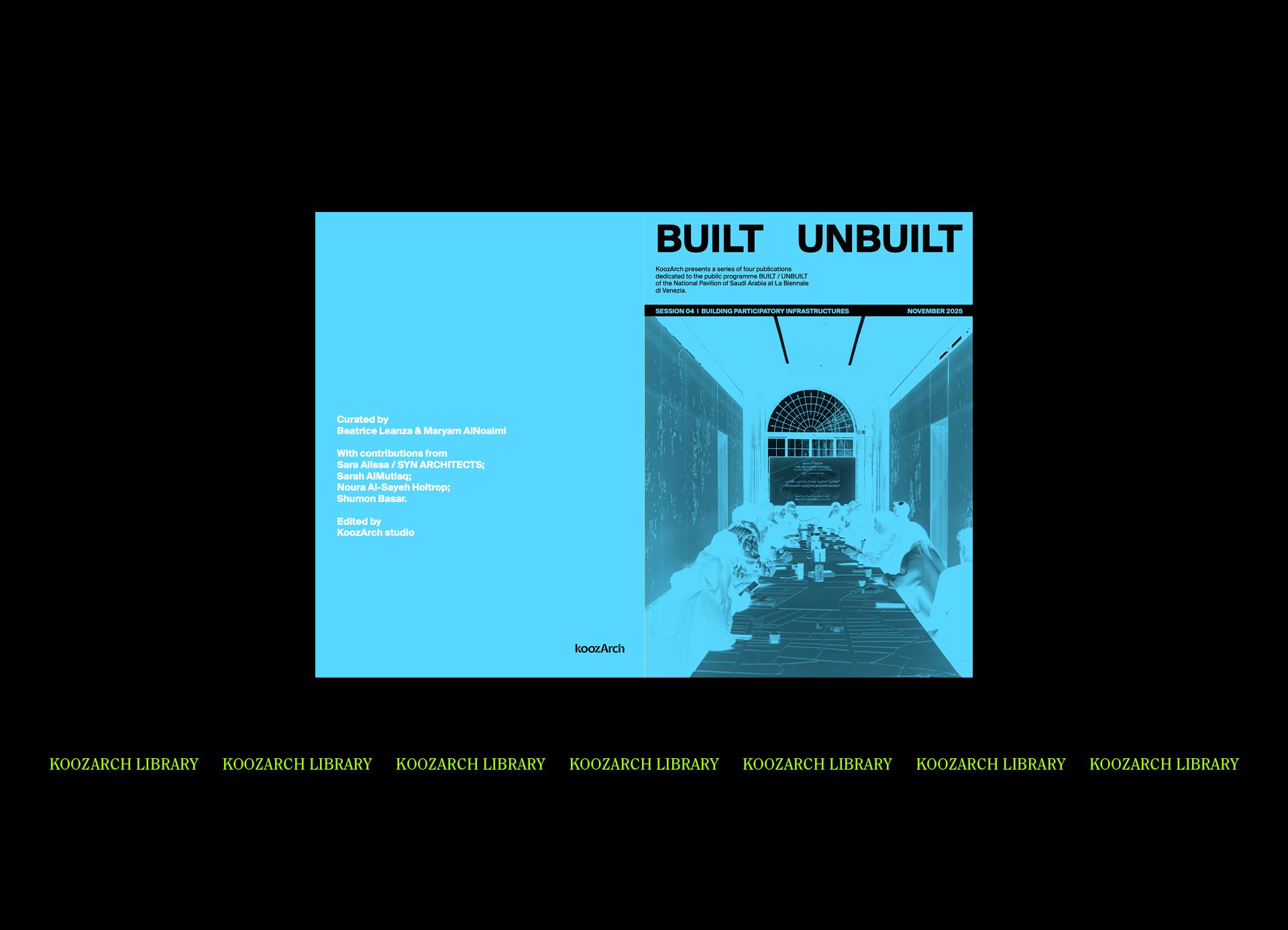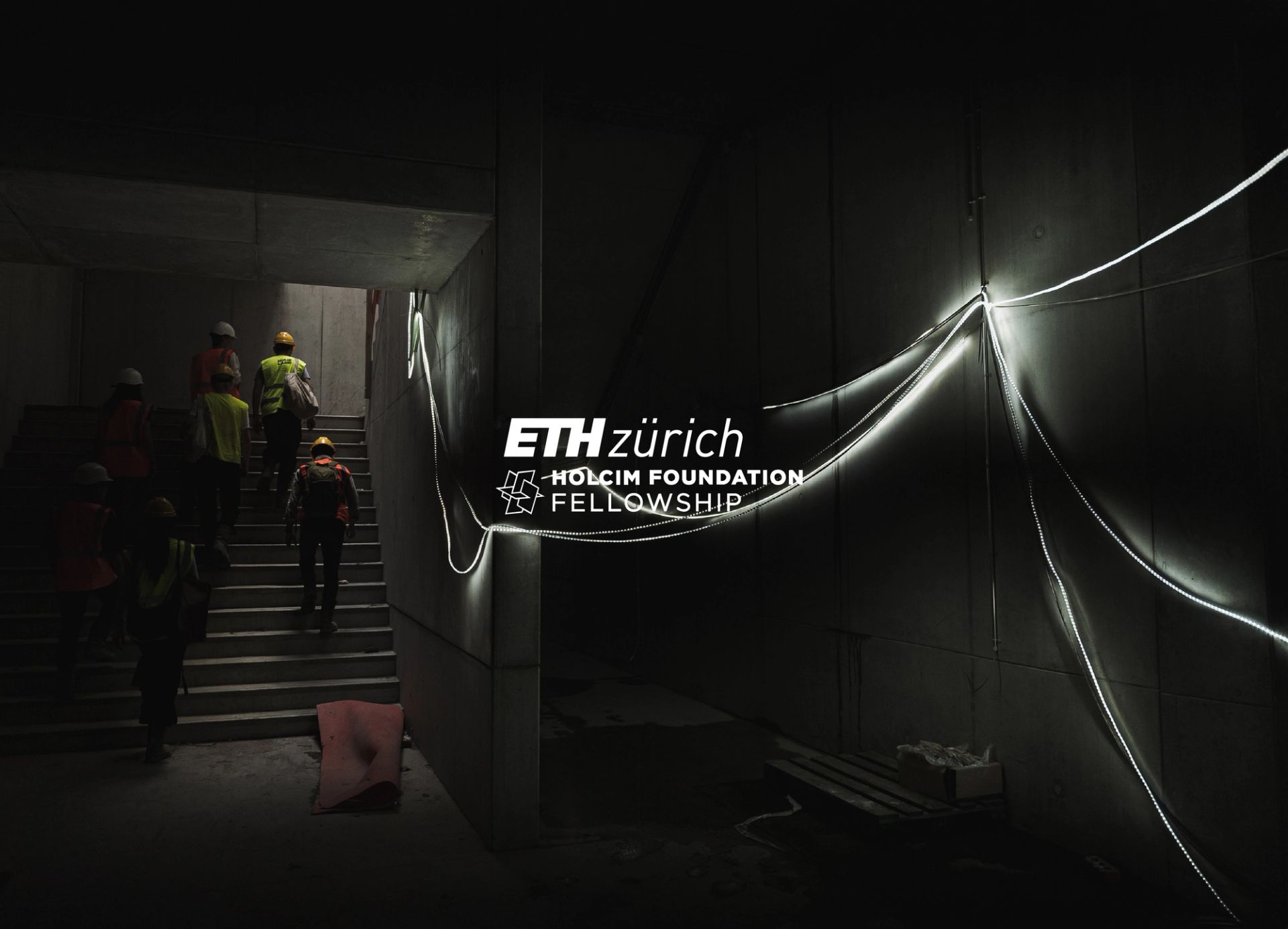Working gardens is a speculative project, proposing to transform a collection of partially vacant, monofunctional office areas scattered in the Randstad metropolitan area into a network of multifunctional productive campuses.
The project starts as a response to the current situation of the Dutch urban development. The current model of urban development is market driven and highly tailored for the needs of a stereotypical “nuclear unit” of the society, a family in a traditional, rather narrow understanding. As such, it does not offer significant diversity, and does not provide viable alternatives for large groups of society: singles, including single parents, elderly,multigenerational families, etc.
According to municipal estimates, the area of Randstad (metropolitan area in the centre ofNetherlands) faces a housing shortage, reaching more than one hundred thousand units. At the same time, according to some estimates, even up to twenty percent of office space insuburban areas remains vacant. Taking into account urgent climatic crises we are currentlyfacing and given the significant influence of the construction industry in the greenhouse gases production, it is crucial to develop ways of reusing existing building stock as a sustainable alternative of providing new housing units. At the same time, it is necessary to provide spatial and technological solutions, which facilitates living in a sustainable way for the inhabitants.
Suggested solution assumes creation of a network of productive campuses gathering people interested in alternative, sustainable and communal ways of living and working. To develop architectural strategies and form tangible environments for collective living, four locations are selected for creation of different projects: innovation hub, exchange campus, knowledge hub and family campus. Each project is designated for a different target group and located in a different area and therefore has different distribution and atmosphere. Developed with a specific context in mind, each projecthas a particular relation to its surrounding - at the same time providing secluded spaces dedicated to focus and open, engaging spaces dedicated to exchange of products, services and knowledge with a surrounding city.
To propose an alternative model for current urban development, the project searches for inspiration in a long Dutch tradition of seeing work as a collective effort and typologies organically developed for collective housing and community building. Reimagining these models which combine housing with spaces dedicated to productive and collective activities, allows for a redefinition of the relation between living and working in a broader context of sustainability and economic networks.
Working Gardens was Shortlisted in 2020 Superscape competition.
KOOZ What prompted the project?
DIV Working Gardens is the response to the Superscape 2020, an open competition posing questionsabout the future of mixed-use areas in the city. It is the continuation of a research that design Dividual has been doing in the last 2 years. The starting point of this process was the entryforthe 15th edition of Europan, a densification strategy for the office park Brainpark, in Rotterdam.

KOOZ What questions does the project raise and which does it address?
DIV The project is an answer to issues about the real estate market in the Netherlands. While working on the Brainpark entry, we noticed many vacant buildings in the area, eventhough it is well connected to the city centre as well as located close to the highwayand the university campus. In the following months we discovered that there is an average of 20% vacancy in office parks in the Netherlands. We address the issue of repurposing obsolete office buildings rather than demolish and reconstruct.
Another problem we tackle in this project is the narrow offer the real estate market has interms of typologies, essentially ignoring the needs of a vast part of society. In WorkingGardens we map these “neglected” social groups, such as singles, young entrepreneurs, elderly and multigenerational families, and we develop new typologies which fit their routines of both living and working.
KOOZ How does the project approach and challenge the brief outlined in the Superscape competition "MIXED-USECITY. Living, Working and Urban Production"?
DIV We approached the brief by creating a mixed-use city for 2050 in a systematic way: instead of focusing on single buildings, we developed derelict office parks into productive campuses where people can live and work together. Reuse plays a central role in the proposal, in a twofold way: limiting the necessity of new constructions and providing affordable space.
Many cities most likely won’t become sustainable on their own due to geographic limitations such as lack of renewable energy sources and distance from food production areas, therefore it is important to place cities inside networks, where resources and products can be shared.
We challenge the brief stating that the future is not about single cities, but about bigger networks. Many cities most likely won’t become sustainable on their own due to geographic limitations such as lack of renewable energy sources and distance from food production areas, therefore it is important to place cities inside networks, where resources and products can be shared in the most efficient and sustainable way between urban areas and the countryside.
With this premise, the project is a vision for Randstad, the most densely populated area in Europe. We imagine four different networks in which the productive campuses and the city around them share energy, knowledge, resources and products. Each community contributes in different ways to the network, creating an overall self-sufficient system.

KOOZ For the 17th International Architecture Exhibition the curator Hashim Sarkis posed the question How will we live together? What does this mean today and for the future?
DIV We believe living together is about sharing and this is one of the most promising solutions to tackle contemporary issues and to cope with future challenges. First contemporary experiments give inspiration for communal housing, where different individuals can live together. A larger apartment where single starters, families and elderly can live together and share communal spaces. Such a way of living creates social cohesion and resilience. At the same time, it proves to be more affordable, presenting an interesting direction in the discussion about a crisis of affordable housing, present in many cities. Sharing the living space is just one aspect of living together. This concept can expand in sharing products and tools, which make them more affordable and better used, avoiding unnecessary waste. The same idea can be applied for the production and consumption of food and energy.
A communal way of living can help to reduce the impact humanity has on climate change and on planet Earth in general, while improving the conditions of living.
A communal way of living can help to reduce the impact humanity has on climate change and on planet Earth in general, while improving the conditions of living. At the end “We are all astronauts on a little spaceship called Earth”, as Buckminster Fuller said more than 50 years ago.

KOOZ How and to what extent have contemporary issues and threats as the changingclimate, a pandemic society, greater inequality, widespread migration and famine influenced the role of the architect in our society?
DIV Global issues such as climate change and the affordable housing crisis highlight the limit and the potential of the role of the architect nowadays. In the first place these themes showthe failure of the so-called star-architect who helps shape cities according to the interests ofthe actors which contributes to the climate crisis. At the same time, we start seeing ageneral acknowledgment of the impact of architecture in climate change. Consequently, some architects have started focusing on the way we use building materials, trying to develop a more circular way of building.
The pandemic, on the other hand, is rising questions on the way architecture is shaping the living and working environment. The huge amount of people working from home during the pandemic is showing our houses are often not fitted to accommodate working. At the same time, home working is questioning the role of office buildings in the future, a problem we addressed in our project.
KOOZ What is the potential of architecture today? What are the greatest concerns for the discipline?
DIV Architecture has the potential to play a central role in the way we envision living, working and leisure in the future. We believe in a “welfare architecture” which tries to answer the inequalities of our society with flexible spaces designed for communities. A new brutalism for our time, with wood replacing concrete as its own material-manifesto. Inertia is the greatest concern for architecture. A design decision taken today has a relevant effect in years while everywhere else decision making is becoming faster and faster.
Architects should find ways to get the architecture process more flexible and resilient or,as architects, we will completely lose any influence in the design process, a trend that is already in place.
To respond to aforementioned challenges of climate change and housing crisis we need to fundamentally change the way we shape and inhabit our environment.
KOOZ What is for you the architect's most important tool?
DIV In our view on the role and most important tools of architects we agree with Floris Alkemade,the Chief Government Architect of the Netherlands who said that the power to visualize the future is the strongest tools architects urban designers have in the modern day. To respondto aforementioned challenges ofclimate change and housing crisis we need to fundamentally change the way we shape and inhabit our environment. Visualizing potential future and possible future outcomes of decisions we take at the moment helps to inform the discussion and overcome the natural fear and skepticism humans have towards change.





